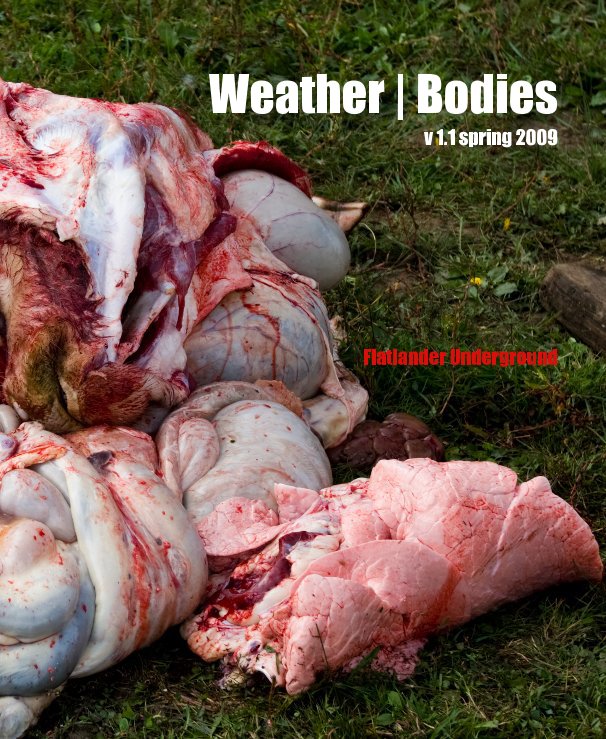Weather | Bodies v 1.1
spring 2009
de Flatlander Underground
Voici le prix vu par vos clients. Éditer la liste des prix
À propos du livre
Straight out of a shack in Vermont, the Flatlander Underground comes together seasonally to clear a swath for an exploration of weather aesthetics. United by the forces of extreme weather, we hail from the sprawling continuum that aligns urban and rural environments. We aim to chart the migrating scales of weather. In tracing the movement from the minuscule to the meteorological, we dowse for our subterranean pulses. It is that below ground lifeblood that draws us from the flatlands into the scythe’s path.
Issue Statement:
Skinned and turned inside out, the pile on the cover – stomachs, lungs, intestines, skull – can no longer be said to be an individual body, but is now landscape. It will join the other carcasses buried in the composting pile and will be spread over the pastures, sustaining life on the farm. This cycle of decay and regeneration suggests how weather mediates the relationship between our bodies and the environment. We are interested in how our bodies are both composed of weather yet subject to its altering and at times destructive forces.
Perhaps it is this dynamic that urges us to adopt weather as a way of understanding our surroundings and selves. The common use of weather as metaphor for psychic or emotional states compels us to more closely examine the uncontrollable patterns of the planet’s workings. And conversely, the tendency to project the image of the body onto landscape, reminds us that we are not separate from the mysterious cycles of decay and regeneration.
Issue Statement:
Skinned and turned inside out, the pile on the cover – stomachs, lungs, intestines, skull – can no longer be said to be an individual body, but is now landscape. It will join the other carcasses buried in the composting pile and will be spread over the pastures, sustaining life on the farm. This cycle of decay and regeneration suggests how weather mediates the relationship between our bodies and the environment. We are interested in how our bodies are both composed of weather yet subject to its altering and at times destructive forces.
Perhaps it is this dynamic that urges us to adopt weather as a way of understanding our surroundings and selves. The common use of weather as metaphor for psychic or emotional states compels us to more closely examine the uncontrollable patterns of the planet’s workings. And conversely, the tendency to project the image of the body onto landscape, reminds us that we are not separate from the mysterious cycles of decay and regeneration.
Voir plus

